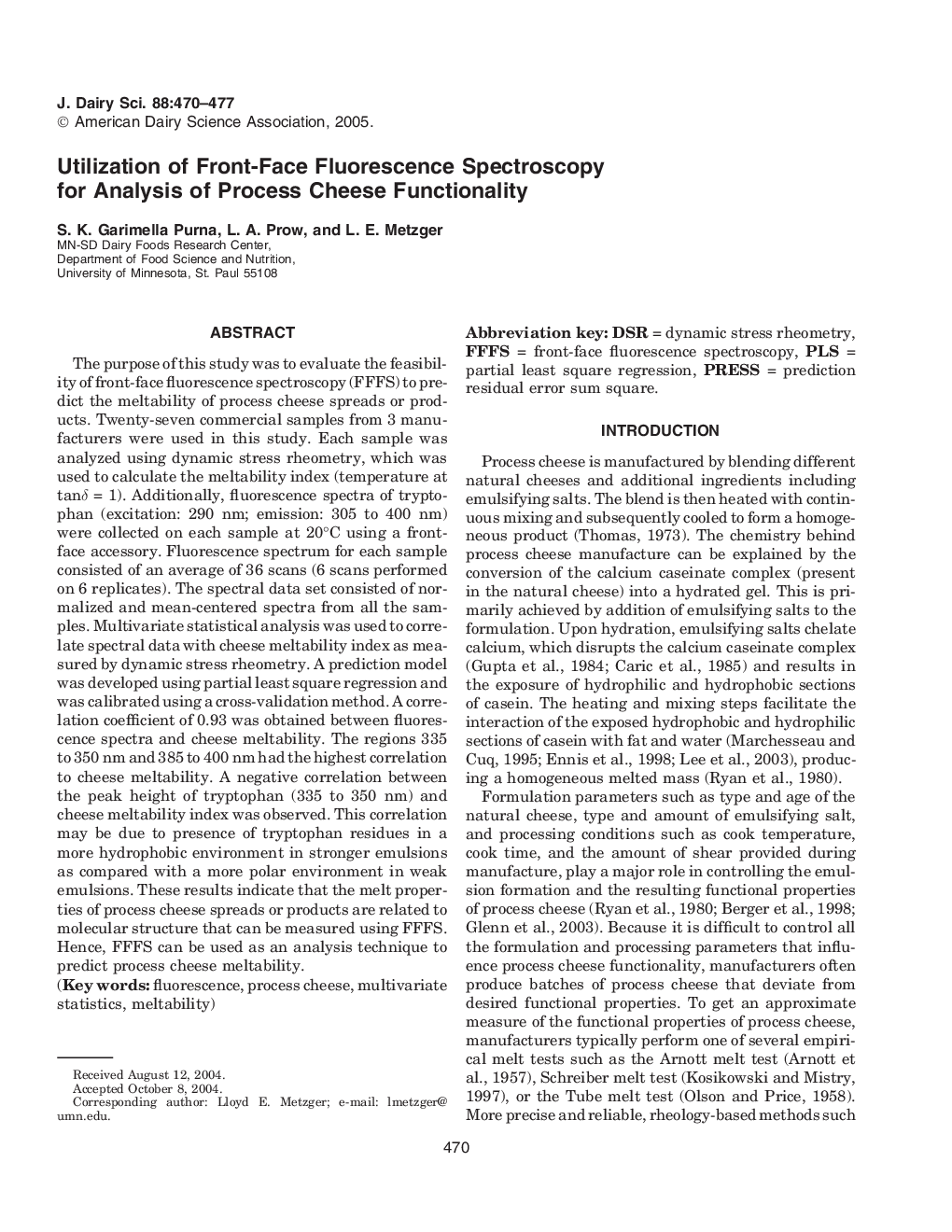| Article ID | Journal | Published Year | Pages | File Type |
|---|---|---|---|---|
| 8981165 | Journal of Dairy Science | 2005 | 8 Pages |
Abstract
The purpose of this study was to evaluate the feasibility of front-face fluorescence spectroscopy (FFFS) to predict the meltability of process cheese spreads or products. Twenty-seven commercial samples from 3 manufacturers were used in this study. Each sample was analyzed using dynamic stress rheometry, which was used to calculate the meltability index (temperature at tanδ = 1). Additionally, fluorescence spectra of tryptophan (excitation: 290 nm; emission: 305 to 400 nm) were collected on each sample at 20°C using a front-face accessory. Fluorescence spectrum for each sample consisted of an average of 36 scans (6 scans performed on 6 replicates). The spectral data set consisted of normalized and mean-centered spectra from all the samples. Multivariate statistical analysis was used to correlate spectral data with cheese meltability index as measured by dynamic stress rheometry. A prediction model was developed using partial least square regression and was calibrated using a cross-validation method. A correlation coefficient of 0.93 was obtained between fluorescence spectra and cheese meltability. The regions 335 to 350 nm and 385 to 400 nm had the highest correlation to cheese meltability. A negative correlation between the peak height of tryptophan (335 to 350 nm) and cheese meltability index was observed. This correlation may be due to presence of tryptophan residues in a more hydrophobic environment in stronger emulsions as compared with a more polar environment in weak emulsions. These results indicate that the melt properties of process cheese spreads or products are related to molecular structure that can be measured using FFFS. Hence, FFFS can be used as an analysis technique to predict process cheese meltability.
Keywords
Related Topics
Life Sciences
Agricultural and Biological Sciences
Animal Science and Zoology
Authors
S.K. Garimella Purna, L.A. Prow, L.E. Metzger,
